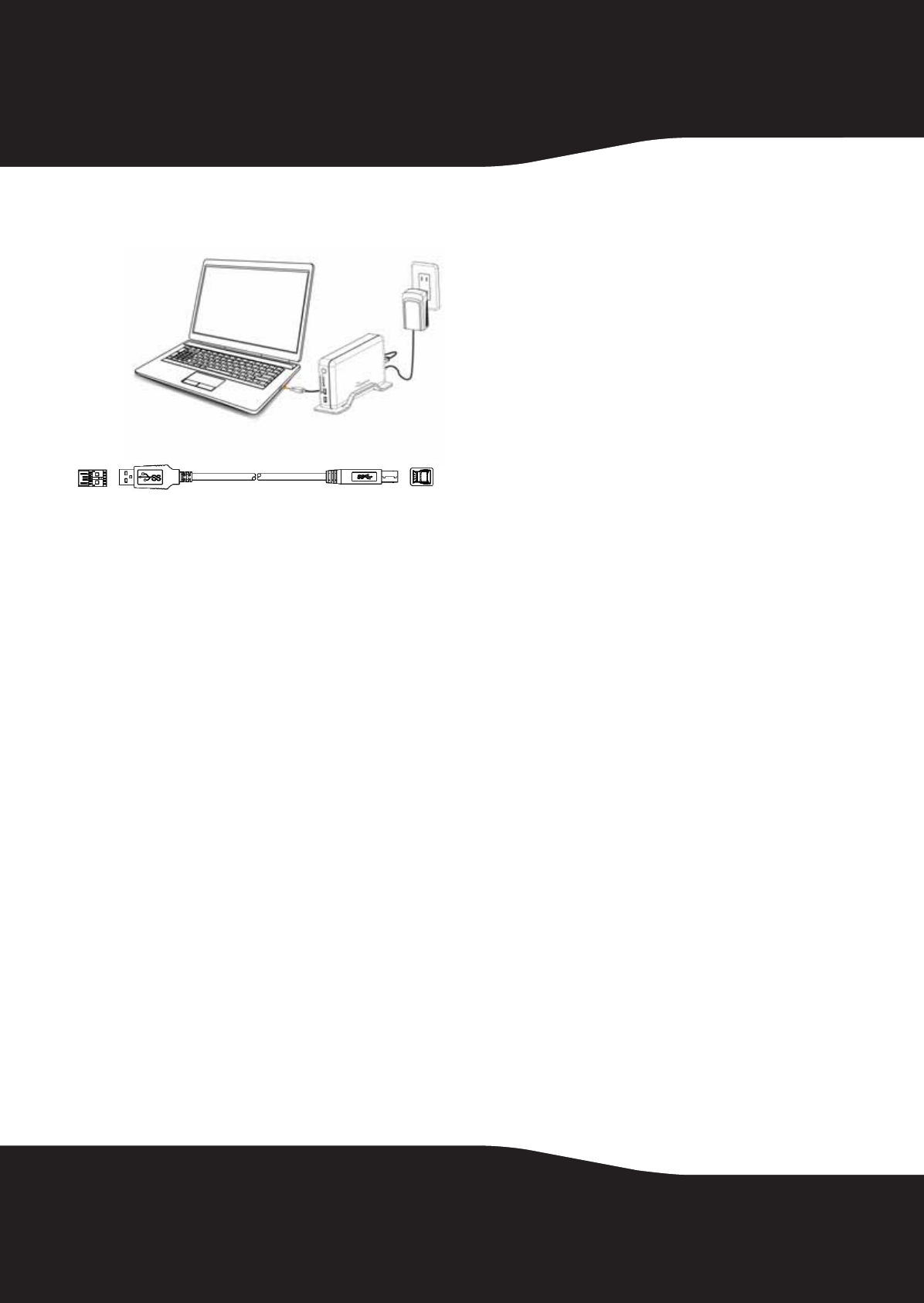
6
2 Plug the USB 3.0 B type connector into the USB
port on the enclosure, then plug the USB 3.0 A
type connector into an available USB 3.0 port
on your computer.
3 Press the Power button on the enclosure. The
operating system automatically detects and
sets up the new drive.
If the drive is correctly detected, a new drive
letter is assigned to the enclosure.
• For Macintosh computers, the new drive
letter appears on the desktop.
•For PCs, the Safely Remove Hardware icon
appears on your taskbar.
Note for Windows users: If you do not see an
additional drive in your system, you must format the
new drive. See Windows online help for more
information.
Notes for Macintosh users: Select Disk Utilities from
the Utilities folder, then select the external enclosure
and format the drive to meet your requirements.
Creating A New Partition
Note: For new hard drives, you need to initialize and
partition your hard drive before it will appear in
Windows Explorer.
The best way to partition a new hard drive is by
using the manufacturer’s program. Most hard
drives should come with a CD that includes its
installation program. If not, visit the
manufacturer's website to see if a download is
available. If the manufacturer’s program is not
available, try the following instead:
Caution: Doing the following will erase any existing data
on the drive. If the drive is damaged and you wish to
recover the data, continuing may overwrite the
existing information!
Creating a new partition in
Windows XP/Vista/7
To create a new partition in Windows XP/Vista/7:
1 Right click My Computer, then click Manage.
2 Select Disk Management under Storage on the
left pane.
Windows should now give you the option to
initialize the disk. If not, locate the new drive,
right click on the new disk (where it says “New
Simple Volume”) and choose Initialize.(This step
may not be required for some hard drives)
3 Follow the prompts in the wizard.
4 Once complete, locate your hard drive in the
bottom right pane. Right-click on the area with
a status bar (to the right of the “New Simple
Volume” area) and click New Partition.
5 Continue following the directions of the
wizard. The recommended partition type is
“primary” and the recommended file system is
“NTFS.” Note that Windows XP limits FAT32
partitions to only 32 GB.
You should now be able to see the drive in
Windows Explorer.
Formatting the hard drive in Windows
To format the hard drive using Windows:
Note: Formatting is only required for a new hard drive.
Do not format a drive that contains valuable data that
you want to save.
1
Click Start, then click Control Panel.
2 Click Performance and Maintenance (in Windows 7
click System and Security), then click Administrative
Tools.
3 Click Computer Management, then click Disk
Management from the menu on the left side of
the screen.
4 Click on the new drive, then click on the Action
tab at the top of the screen.
5 Go to All Tasks, then click on Format from the
menu.
6 Select the file system and other choices you
want, then click OK.
Creating a new partition in Mac OS X
10.4 or higher
If you are using a new hard drive, you may need to
initialize it first. Initialize your internal hard drive
using Drive Setup from the Mac OS CD that came
with your computer.
To initialize a Hard Drive:
1 Start your computer from the Mac OS CD.
2 Locate the Utilities folder on the Mac OS CD and
double-click it to open the folder.
USB 3.0 A-type connector
USB 3.0 B-type connector
10-1087_RF-HD3035_MAN_ENG_V1.fm Page 6 Friday, October 29, 2010 1:25 PM
